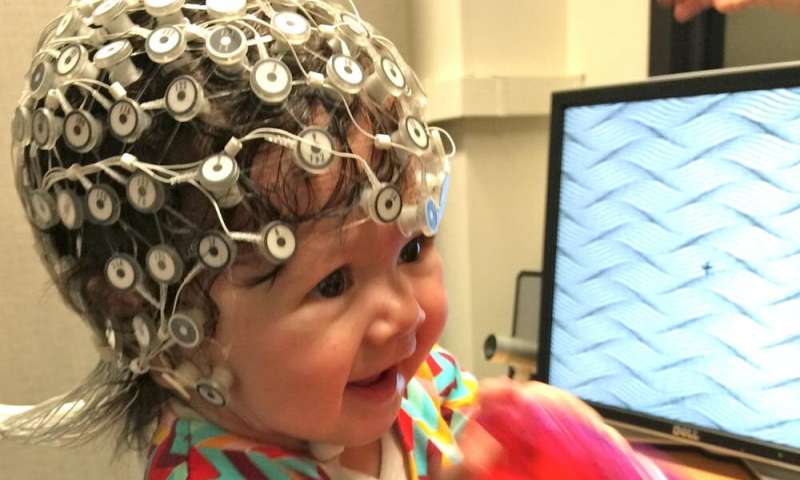Clear masks for caregivers mean young children can keep learning from adults' faces

As daycare centers and pre-kindergartens begin to reopen around the U.S., the Centers for Disease Control and Prevention recommends masks be worn by teachers, care workers and children over two years of age.
Important as they are for helping minimize the spread of the coronavirus, masks come with a potential downside when worn around little kids. Decades of research has shown faces are an important tool for learning. With caregivers' faces covered, infants and young children will miss out on some of the visual cues they'd normally get from faces.
I study visual learning and recommend that policymakers and educators consider transparent face masks for use around infants and young children.
Faces are key for little learners
When infants and children come to my research lab (with their families, of course), we show them pictures of faces on a computer screen, sometimes paired with sounds or words. Using tools like eye tracking technology and EEG, which measures electrical activity in the brain, we are able to observe what they're paying attention to and learn more about how their brains are developing. These methods allow us to measure learning even before infants can talk.
Our work shows that infants pay close attention to eyes and mouths on faces. Infants also learn that two eyes are usually above a nose which is above a mouth, and they learn to combine these features into one whole. Babies use faces as a tool for learning from familiar people, like mom, dad or a care worker.
Infant brain responses change when faces are altered, turned upside down or presented with conflicting information, like a happy face paired with a crying sound. These changes in brain responses suggest that infants can tell when there is something different about a face.
Although they cannot yet speak, infants as young as six months of age learn and understand names for new faces. When similar-looking faces are presented in a book and paired with names, babies are able to differentiate them. Learning to match a name with a face may be more difficult when faces are masked.
Faces foster language development
Research shows infants and children pay close attention to mouths during important periods of language learning.
Young babies shift their visual focus from looking primarily at the eyes of talking faces to looking at the mouths between 4 and 8 months of age. Infants begin to understand the meaning of familiar words between 6 and 9 months of age. Looking toward the mouth increases as infant speaking skills increase. Although this focus on the mouth decreases around 9 to 12 months of age, it increases again around 14 months of age during word learning. Even 5-year-olds show increased interest in the mouths of talking faces compared to adults.
While it is unknown how covering the mouth will directly affect development at every age, these studies suggest that infants and children use the mouths of faces as a tool for learning to produce speech sounds and for learning new words.
What should care workers and educators do?
Wearing masks around infants and children during the first five years of life may reduce their ability to learn from auditory and visual cues—and this may negatively influence speech and language learning. Covering faces could also limit children's ability to recognize familiar people and determine when someone is happy, sad or angry.
Of course, it's crucially important to protect children and workers from the spread of the coronavirus. But there are ways to keep everyone safe while also allowing little ones to see adults' faces.
If possible, care workers and educators spending long hours with infants and young children should consider clear masks or transparent face shields to reduce potential negative impacts on early learning. And, certainly, parents should continue to play, sing, read and talk face to face with their infants and children.
Luckily, infants and young children often spend just as much time at home, where healthy caregivers don't need to wear masks. Developing children are also very resilient, so if transparent masks are not available, it is still important for caretakers to wear masks until public health authorities recommend otherwise.
This article is republished from The Conversation under a Creative Commons license. Read the original article.![]() This story is part of Science X Dialog, where researchers can report findings from their published research articles. Visit this page for information about ScienceX Dialog and how to participate.
This story is part of Science X Dialog, where researchers can report findings from their published research articles. Visit this page for information about ScienceX Dialog and how to participate.